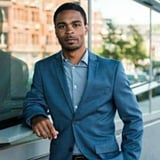Summary
How do you create the conditions for delivering a great customer experience on a rapidly changing platform? In 2016, Norway’s national railway company began building a new technology platform. As designers, we yearned to address the customer’s actual needs and desires, not just a fresh look and technical upgrade. But with no process, principles, tools, or internal design resources, where do you start?
Key Insights
-
•
Privatization forced MSB to relinquish control over ticket machines and IT, compelling a new digital-focused strategy.
-
•
Designers initially faced tension with developers due to different paces and priorities within agile.
-
•
Introducing 'waves' as outcome-focused releases helped align design and development processes beyond fixed sprint durations.
-
•
Design sprints kickstarted collaboration and built shared understanding across cross-functional teams.
-
•
Users prefer familiar interfaces, valuing trust and habit over new designs, complicating redesign efforts.
-
•
Simple, quick feedback tools like a 'give feedback' button can generate valuable and actionable user insights.
-
•
Open access to user feedback motivates developers to solve real user problems proactively.
-
•
Ecological validity in user research is critical—testing must happen in users’ real contexts to be meaningful.
-
•
Continuous learning loops enable teams to adapt products iteratively based on real user data and changing business goals.
-
•
Successful design in agile requires processes that create space for designing great experiences rather than forcing designers to keep up with rapid deliveries.
Notable Quotes
"The starting point was a very technical one: please make the user experience exactly the same a year from now."
"It’s not about old versus new. It’s about trust and deeply rooted habits."
"Designers felt like hamsters in a hamster wheel, always reacting, never exploring."
"Waves are defined by the outcome we want to achieve, not just by time frames."
"Google Design Sprint is the best inception strategy I know for design thinking."
"Giving the whole team access to feedback made them feel responsible and inspired to solve user needs."
"Ecological validity means the test must happen in an environment as close to reality as possible."
"We’re not building to build, we’re building to learn."
"How can developers and designers work together to create great products? That’s the question."
"One eye on the horizon and the other on the next wave is the perspective teams need to deliver quality digital products."
Or choose a question:
















More Videos

"I believed we could do more — more for the company, customers, stakeholders, and ourselves if we had more agency."
Nalini KotamrajuResearch After UX
March 25, 2024

"Society grows great when old people plant trees they know they shall never sit in."
Dean BroadleyNot Black Enough to be White
January 8, 2024

"When we start changing our behavior, we start changing the voices and behavior around us."
Denise Jacobs Nancy Douyon Renee Reid Lisa WelchmanInteractive Keynote: Social Change by Design
January 8, 2024

"People problems find their way to design ops because we’re known problem solvers and people run to us when morale is low."
Kim Fellman CohenMeasuring the Designer Experience
October 23, 2019

"Good design is honest and yes, the Jewel e-cigarette will honestly kill you."
George AyeThat Quiet Little Voice: When Design and Ethics Collide
November 16, 2022

"Sometimes alignment work isn’t enjoyable, but it’s part of the job for design system success."
Nathan CurtisBeyond the Toolkit: Spreading a System Across People & Products
June 9, 2016

"We are building cross-product research capabilities to curate a holistic understanding of agents across all workflows and touchpoints."
Greg PetroffThe Compass Mission
March 10, 2021

"Global and local cultures are closely entwined and always influencing one another."
Chloe Amos-EdkinsA Cultural Approach: Research in the Context of Glocalisation
March 27, 2023

"The new site had a 19% dropout rate compared to 32% on the old site, showing clear improvement."
Mackenzie Cockram Sara Branco Cunha Ian FranklinIntegrating Qualitative and Quantitative Research from Discovery to Live
December 16, 2022
















